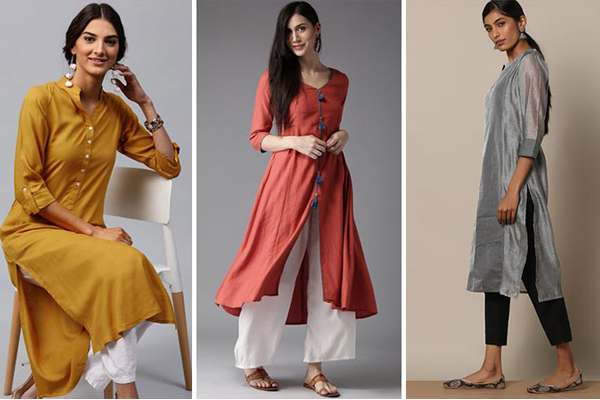 16 Mar 2018 Admin, Kurta Kurtis
16 Mar 2018 Admin, Kurta Kurtis
Deconstructing the dress code-THE HINDU
I have been asked many strange questions by foreign tourists. One of the earliest was by a Danish couple: “Do you wear coconut oil in your hair?”
I felt insulted as I heard them calling me a rustic. Upon rumination I realise that their curiosity was genuine.
There was once a French ambassador’s wife who, upon noticing that I wore thin, gold anklets, was surprised into asking me why my anklets were not thick and noisy as she had observed among her domestic help. I had a very low opinion of this particular lady and the way she treated her newly acquired “servants”. She clearly thought all Indian women were rustics and ready to do her dishes.
I don’t think foreigners know how to handle house labour in India, they don’t grow up with this and then suddenly when it lands on them, they take on a superior attitude. I think we take on a superior attitude at our servants too, but there is a certain amount of subtlety, dignity and kindness. However, all this is a discussion on another topic. Let’s come back to clothes.
Appropriate dress
In all honesty, dressing appropriately in India is something that I too learned late in my life. In my family, my grandmother dressed more traditionally than my mother did, and my mother more traditionally than I did. For example, my grandmother would wear the natural kumkum as bindi, my mother would wear a maroon sticker as bindi, and I would wear a bindi when it suits me. My grandmother always wore the nine-yard sari, my mother the five-yard sari and lately the salwar kameez. I wear salwar kameez, mostly pants, sometimes skirts, long skirts and occasionally the sari.
I suppose one can say that down the generations there has been first a pan-Indianisation, with the salwar kameez taking over. And then a slow westernisation of clothes as in my case. I can safely say that a similar transition has occurred across much of the Indian middle class. The working classes have been more conservative socially but even amongst them the salwar kameez currently reigns. To a woman travelling in from another country I can safely advise that salwar kameez would be the most appropriate dress within the country.
Public vs private space
The concept of being free to wear what you want in public spaces does not work in India. Roads and walking on roads is primarily for the poor, so is much of the public transport, like buses and trains. The poor are also generally more socially conservative with respect to clothing for both men and women. Wearing off-shoulder tops or even sleeveless tops in south India will make one stand out from the crowd if one is walking on the roads.
That is one problem. The second is that such “free” clothes are thought to be disrespectful to others. Don’t be too surprised if a random stranger tells you to adjust your blouse or pull up your pants especially if undergarments come out of hiding.
The third problem is the issue of safety for women. Since there are a lot of crowds on the roads and a class bias, a women who is not in conservative clothes can provoke curiosity in some men and stalking behaviour. So if you are using public transport or public spaces you should be conservatively dressed to avoid trouble and keep it easy for yourself.
In private spaces, like homes, restaurants and clubs, you can wear what you want. In fact, dressing conservatively can be inappropriate. However, in both private and public spaces in India, one never gets away from class issues, so this has to be at the back of the mind somewhere. For example, you can wear a bikini on a Goan beach, but do not expect the local coconut-seller not to ogle you.
There have been times when I do feel restricted by such social rules. I have to run into my closet and pull on a skirt over my shorts everytime a delivery man comes home, and I intensely dislike that. I convince myself though that I am protecting myself this way. India is a very complex and very densely populated country and one has to learn to mix without conflict.
Is there a north-south difference? My observation has been that certainly the women from the north of India, which is most places in the country if one lives in Chennai, women are more modern in their clothing and make-up. But the variance is slight. For example, open hair is more socially permissible in the north.
Now that I have scared all the foreign tourists stiff, I will end with my final point on accessories. The bindi, the forehead dot, is looked up with much favour in the country and can be a good addition to the travel kit. There are bracelets, anklets, bangles, clips, earrings and so on that the Indian woman like to be loaded with. Many pretty things are also so cheap to buy. Enjoy your explorations!

 Get Latest Fashion Updates
Get Latest Fashion Updates


